UNESCO Creative Cities Network (UCCN)
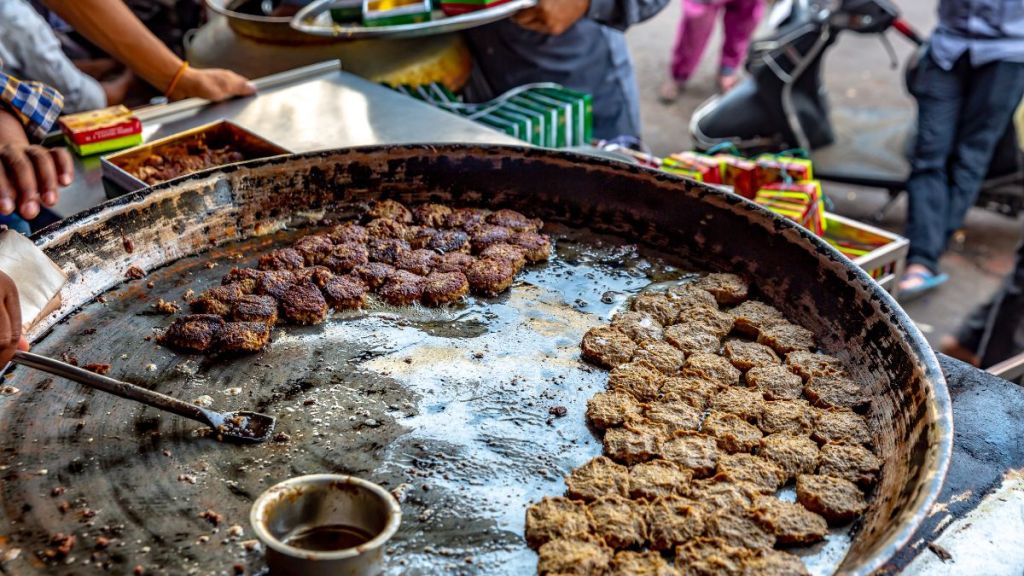
- 18 Jun 2025
In News:
Lucknow has officially submitted its nomination to be recognised as a “City of Gastronomy” under the UNESCO Creative Cities Network (UCCN), aiming to join Hyderabad as the only other Indian city to hold this title in the gastronomy category.
About the UCCN
- Established: 2004
- Purpose: To promote international cooperation among cities that use creativity as a key element for sustainable urban development.
- Focus Areas: Literature, Music, Crafts & Folk Arts, Design, Film, Media Arts, and Gastronomy.
- Key Goals:
- Leverage the creative economy for sustainable development.
- Encourage cultural diversity and resilience against urban challenges like climate change and inequality.
- Promote collaboration across public, private, and civil society sectors.
UCCN and Sustainable Development
- UCCN supports the UN Sustainable Development Goals (SDGs) by positioning culture and creativity at the heart of local development policies and planning.
- Member cities are expected to create innovation hubs, support local artists, and preserve cultural heritage.
India and the UCCN
As of 2023, 10 Indian cities are part of the network:
- Hyderabad – Gastronomy
- Jaipur – Crafts and Folk Arts
- Varanasi – Music
- Chennai – Music
- Mumbai – Film
- Srinagar – Crafts and Folk Arts
- Kozhikode – Literature
- Gwalior – Music (Recent entries include Kozhikode and Gwalior)
Lucknow’s Nomination: Highlights
- Nominated Title: City of Gastronomy
- Coordinated by: Department of Tourism and Culture, Lucknow
- Culinary Heritage: Awadhi cuisine, including dishes like nihari, kebabs, biryani, khasta, kulfi, jalebi, and puri-sabzi.
- Cultural Value: The city’s food is not just a tradition but a living culinary ecosystem, passed down through generations and practiced by diverse communities.
- Dossier Preparation: By renowned heritage conservationist Abha Narain Lambah.
- Verification: A field visit by UNESCO is expected as part of the evaluation process.
Global Cities of Gastronomy (Examples)
- Alba (Italy)
- Arequipa (Peru)
- Bergen (Norway)
- Belem (Brazil)
- Bendigo (Australia)
These cities, like Hyderabad, are recognised for their distinctive and sustainable culinary traditions.
Servants of India Society
- 15 Jun 2025
In News:
Tensions have resurfaced between Gokhale Institute of Politics and Economics (GIPE) and the Servants of India Society (SIS) over control of a joint bank account and allegations of financial misconduct. This has brought attention back to the legacy and functioning of the historic SIS.
About Servants of India Society (SIS)
- Founded: June 12, 1905
- Founder: Gopal Krishna Gokhale, with G.K. Devadhar, A.V. Patwardhan, and N.A. Dravid
- Location: Fergusson Hill, Pune, Maharashtra
- Headquarters: Pune, with branches in Chennai, Mumbai, Nagpur, Allahabad, etc.
Objectives:
- To train a dedicated cadre of national workers for selfless service to the nation.
- Promote political education, social reform, and public service.
- Work towards upliftment of underprivileged communities, including rural and tribal populations.
- Achieve social change through constitutional and moderate means, not violent agitation.
Membership and Structure:
- Members undergo a five-year training period and vow to serve on modest salaries.
- Considered “young missionaries of Indian nationalism.”
- Notable Members:
- V.S. Srinivasa Sastri (later president after Gokhale’s death in 1915)
- Hriday Nath Kunzru
- A.V. Thakkar
Ideological Basis:
- Strong emphasis on constitutionalism, moderation, and liberalism.
- Aimed to create a disciplined, morally upright civil society to complement political struggle.
About Gopal Krishna Gokhale:
- Born: May 9, 1866 | Died: February 19, 1915
- Moderate leader of the Indian National Congress and a liberal reformer.
- Influenced by Justice M.G. Ranade and Western political thought.
- Advocated for gradual self-governance and saw value in British-initiated modernization.
- Played a pivotal role in the Morley-Minto Reforms (1909).
- Mentor to Mahatma Gandhi and known for his economic insight and powerful oratory.
Sant Kabirdas
- 12 Jun 2025
In News:
11th June 2025 marked the 648th birth anniversary of Sant Kabirdas, one of India’s most revered 15th-century Bhakti saints.
Place of Birth: Varanasi, Uttar Pradesh
Birth Period: Circa 1440 CE, raised in a Muslim weaver family
Philosophy and Teachings
- Nirguna Bhakti: Kabir rejected idol worship and sectarian divisions, instead preaching devotion to a formless, universal God (Nirguna Brahman).
- Social Reform: He denounced casteism, rituals, and blind faith, stressing ethical conduct, humility, and self-realization.
- Inner Divinity: He believed God resides within and taught seekers to seek truth through introspection (Antar-drishti) rather than temple rituals.
- Language and Style:
- Composed in Sant Bhasha, a blend of local dialects understood across religions.
- Created Ulatbansi verses — paradoxical or "upside-down sayings" — challenging conventional wisdom.
Literary Legacy
- Major Works: Bijak, Sakhi Granth, Kabir Granthavali, Anurag Sagar
- Scriptural Inclusion:
- His verses appear prominently in the Adi Granth Sahib compiled by Guru Arjan Dev.
- Adopted by various traditions:
- Kabir Bijak (Kabirpanth, UP)
- Kabir Granthavali (Dadupanth, Rajasthan)
Impact and Influence
- Kabir Panth: A spiritual sect founded on his teachings, still active in North India.
- Sikhism: Deeply influenced Guru Nanak; Kabir’s dohas are integrated into Guru Granth Sahib.
- Cross-Religious Appeal: Respected by both Hindus and Muslims, he is a symbol of India’s syncretic spiritual culture.
- Other Sects: Influenced Dadu Panthis and Nirguna Bhakti traditions across India.
Contemporary Relevance
- Religious Harmony: In a climate of polarization, Kabir’s teachings offer a path of unity and spiritual inclusivity.
- Social Justice: His resistance to caste hierarchy echoes India’s constitutional values of equality and dignity.
- Sustainable Living: His emphasis on simplicity and contentment aligns with ecological and minimalist principles.
- Spiritual Humanism: He stressed conduct over ritual, making his message resonate across belief systems in today’s pluralistic society.
Bhagwan Birsa Munda
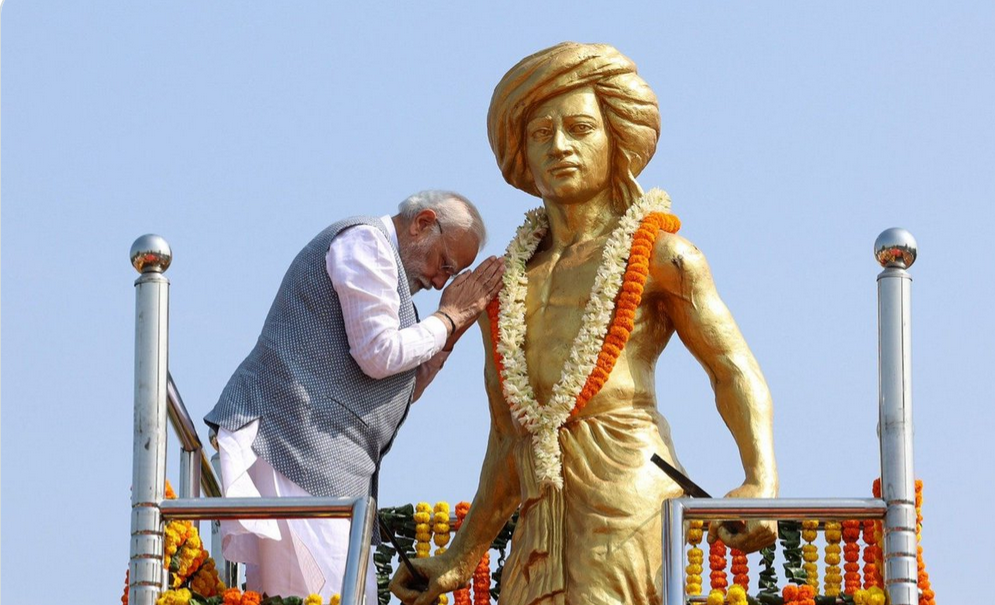
- 11 Jun 2025
In News:
On his 125th death anniversary (Balidan Diwas), the Prime Minister of India paid tribute to Bhagwan Birsa Munda, hailing his pioneering role in tribal empowerment and anti-colonial resistance.
Early Life and Identity
- Born: 15 November 1875, Ulihatu, Chotanagpur Plateau (now in Jharkhand).
- Tribe: Munda.
- Title: Revered as “Dharti Aaba” (Father of the Earth).
- Education: Attended Christian missionary schools in Chaibasa; later rejected colonial influence and converted to Vaishnavism, blending it with tribal spirituality.
- Founder of: The Birsait sect, advocating moral reform and cultural awakening among Adivasis.
Role in Freedom Struggle & Tribal Mobilisation
Resistance Against Exploitation:
- Zamindari System: Opposed British-imposed land systems that dismantled the Khuntkatti tribal land tenure, dispossessing tribals and reducing them to bonded labourers.
- Beth Begari: Led resistance against forced labour and revenue policies.
- Forest Rights: Fought against British encroachment and resource extraction in forests.
Cultural and Spiritual Renaissance:
- Condemned social evils like black magic and alcoholism.
- Mobilised tribals using tribal songs, attire, drums, and community gatherings.
- Advocated tribal self-rule and cultural pride against the oppression by Dikus (outsiders).
Ulgulan Movement (1895–1900): The Great Tumult
- Nature: A widespread anti-colonial rebellion across present-day Jharkhand, Odisha, and Bengal.
- Strategy: Guerrilla warfare, targeting British outposts, churches, and police stations.
- Slogan: “Abua Raj setar jana, Maharani Raj tundu jana” (Let the rule of our people begin, let the Queen’s rule end).
- Emphasized a vision of egalitarian tribal raj rooted in indigenous governance systems.
Arrest, Martyrdom, and Legacy
- Arrested: 1895; Died: 9 June 1900 in Ranchi Jail under mysterious circumstances.
- Though the rebellion was crushed, it led to the Chotanagpur Tenancy Act, 1908, securing tribal land rights.
Recognition and Legacy
- Declared as “Bhagwan” (Lord) by tribal communities for his cultural leadership and resistance.
- Institutions named in his honour: Birsa Agricultural University, Birsa Institute of Technology, etc.
- November 15 (birth anniversary) declared Janjatiya Gaurav Diwas (Tribal Pride Day) in 2021 by the Government of India.
- Symbol of tribal assertion, indigenous identity, and early resistance to colonialism in India.
Raja Bhabhut Singh Honoured
- 09 Jun 2025
In News:
In June 2025, the Madhya Pradesh Government held a special Cabinet meeting at Pachmarhi, renaming the Pachmarhi Wildlife Sanctuary after Raja Bhabhut Singh, a lesser-known but formidable tribal freedom fighter of the 1857 revolt.
About Raja Bhabhut Singh
- Lineage: Belonged to the Jagirdar family of Harrakot Raikheri, descended from Thakur Ajit Singh. His grandfather, Thakur Mohan Singh, had allied with Peshwa Appa Saheb Bhonsle of Nagpur during the 1819–20 resistance against the British.
- Role in 1857 Revolt:
- A key Gond tribal leader with control over Jabalpur and the Satpura hills.
- Employed guerrilla warfare tactics in the Satpura forests, using deep geographical knowledge to harass British forces.
- Maintained close ties with Tatya Tope, a prominent national leader.
- Martyrdom:
- British deployed the Madras Infantry to capture him.
- He was executed in 1860, and is remembered in Korku tribal folklore.
- Known as the "Shivaji of Narmadachal" for his resistance strategies.
Pachmarhi Wildlife Sanctuary (Now Raja Bhabhut Singh Sanctuary)
- Located in the Satpura mountain range, central Madhya Pradesh, within the Deccan Peninsula biogeographic zone.
- Highest point: Dhoopgarh (1,352 m).
- Forms part of the Satpura Tiger Reserve, along with:
- Satpura National Park
- Bori Wildlife Sanctuary
- Key Biodiversity Zone in Central India.
Korku Tribe Overview
- Region: Mainly in Madhya Pradesh, Chhattisgarh, and Melghat (Maharashtra).
- Occupation: Traditionally agriculturalists; introduced potato and coffee cultivation.
- Society: Patrilineal communities led by traditional headmen.
- Culture:
- Practice ancestral worship through memorial stones called Munda.
- Rich in oral traditions, which preserve the memory of tribal icons like Raja Bhabhut Singh.
Discovery of 800-Year-Old Pandya-Era Shiva Temple
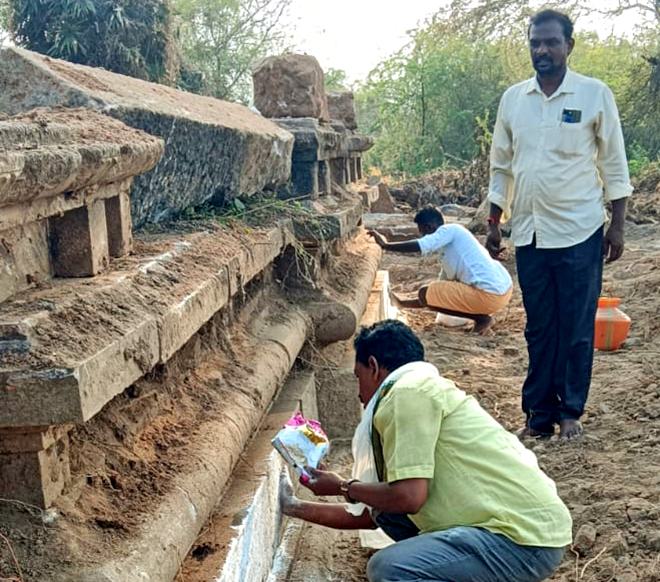
- 08 Jun 2025
In News:
An 800-year-old Shiva temple of the later Pandya period has been unearthed at Udampatti, a village in Melur taluk, Madurai district, Tamil Nadu.
Key Highlights:
- Discovery: Foundation of a later Pandya period Shiva temple (dated to 1217–1218 CE) unearthed accidentally by children.
Architectural Insights:
- Only the stone base of the temple (north and south sides) survives.
- Identified as a Shaivite temple using foundation engravings and reference to Silpa Sastram.
Inscriptions & Historical Significance:
- Inscriptions deciphered by C. Santhalingam (Pandya Nadu Centre for Historical Research).
- Temple identified as Thennavanisvaram, located in ancient Attur (present-day Udampatti).
- “Thennavan” was a Pandya royal title, suggesting direct patronage.
Key Inscriptions (1217–18 CE):
- A sale deed records the transfer of a waterbody named Nagankudi along with wet/dry land.
- Seller: Alagaperumal, chieftain of Kalavalinadu
- Buyer: Nambi Perambala Kuthan alias Kangeyan
- Sale amount: 64 kasu (coins)
- Tax revenue from the land assigned to the temple for daily expenses, indicating its financial independence.
Archaeological Relevance:
- Confirms ancient village name (Attur), showcasing socio-economic practices during the Later Pandya period.
- Highlights temple economy, land-water rights, and administrative structures.
Pandya Dynasty
- One of the Three Crowned Tamil Dynasties (alongside Cholas and Cheras).
- Capital: Initially Korkai, later Madurai.
- Early Pandyas active since 4th century BCE; Later Pandyas (1216–1345 CE) saw a golden age under Maravarman Sundara Pandyan.
- Controlled parts of Sri Lanka, Telugu regions, and had trade links with Rome & Southeast Asia.
- Symbol: Fish
Cultural Contributions:
- Patronage of Sangam literature, Shaivism, Vaishnavism, Jainism.
- Temples: Meenakshi Temple (Madurai), Nellaiappar Temple (Tirunelveli).
- Promoted Tamil arts, Bharatanatyam, and education.
Decline:
- Succumbed to Chola, Hoysala conflicts and Delhi Sultanate invasions.
- Madurai Sultanate (1335) and later Madurai Nayak dynasty (1529) succeeded their rule.
Ahilyabai Holkar
- 31 May 2025
In News:
On the 300th birth anniversary of Maharani Ahilyabai Holkar, the Prime Minister will participate in the Mahila Sashaktikaran Maha Sammelan in Bhopal to honour her enduring legacy.
Historical Background
- Born: 31 May 1725
- Ruled: Malwa region (1767–1795) as part of the Maratha Confederacy
- Dynasty: Holkar
- Capital: Maheshwar (now in Madhya Pradesh)
Initially serving as a regent, Ahilyabai Holkar became the sovereign ruler after her husband and father-in-law’s deaths. Her rule is widely regarded as the golden age of the Holkar dynasty.
Governance and Administrative Reforms
- Ahilyabai was known for her equitable justice system, exemplified by the sentencing of her own son for a capital crime.
- She abolished discriminatory practices, such as the law confiscating property from childless widows.
- Courts for dispute resolution were established, and she remained accessible to the public, holding daily audiences.
- She broke gender norms by not observing purdah, a rare move for female rulers of the time.
Military Leadership
- Trained under Malhar Rao Holkar, she led her forces in battle.
- Appointed Tukoji Rao Holkar (Malhar Rao’s adopted son) as army commander.
- In 1792, she engaged a French officer, Chevalier Dudrenec, to modernize her army by establishing four battalions.
Cultural and Architectural Contributions
- A patron of literature and arts, she invited scholars like Moropant, Ananta Gandhi, and Khushali Ram to her court.
- Promoted craft and industry, notably founding the Maheshwar textile industry—famous today for Maheshwari sarees.
- Commissioned the construction and restoration of hundreds of Hindu temples and dharamshalas across India.
- Her most iconic act was the renovation of the Kashi Vishwanath Temple in Varanasi in 1780.
- Also contributed to infrastructure development, including roads, wells, forts, and rest houses.
Titles and Recognition
- Referred to as ‘Punyashlok’, meaning one as pure as sacred chants.
- British historian John Keay called her the ‘Philosopher Queen’.
Demise and Succession
Ahilyabai passed away on 13 August 1795 at the age of 70. She was succeeded by Tukoji Rao Holkar, who later abdicated in favour of Jaswant Rao Holkar. Jaswant Rao remained the last Holkar to rule independently until 1804.
Dokra Artwork
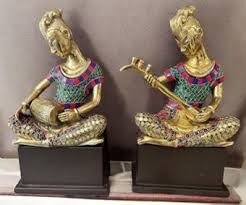
- 18 Feb 2025
In News:
During a recent diplomatic visit, Prime Minister Narendra Modi gifted French President Emmanuel Macron and the First Lady symbolic Indian artifacts — a Dokra artwork and a silver hand-engraved mirror — showcasing India’s rich heritage of tribal and fine metal craftsmanship.
Key Highlights:
Dokra Art: A Living Tradition
- Dokra, also known as Dhokra, is a non-ferrous metal casting craft that employs the lost-wax technique, practiced for over 4,000 years.
- It is predominantly practiced by Ojha metalsmiths and DhokraDamar tribes, across Chhattisgarh, Jharkhand, Odisha, West Bengal, and Telangana.
- Notable for its seamless brass sculptures, each Dokra artifact is cast using a single-use clay and wax mould, ensuring that no two pieces are identical.
- Dokra items include figurines, utensils, jewelry, and religious motifs, often reflecting tribal life and nature.
Historical Significance:
- The “Dancing Girl” of Mohenjo-Daro (from the Harappan Civilization) is considered one of the earliest examples of Dokra-style metal casting, underlining its archaeological and civilizational importance.
Craftsmanship Features:
- The casting process takes nearly a month per piece, reflecting the labour-intensive and skilled nature of the art.
- Dokra is globally recognized for its sustainability, aesthetic uniqueness, and its ability to merge function with folklore.
Fort William Renamed Vijay Durg
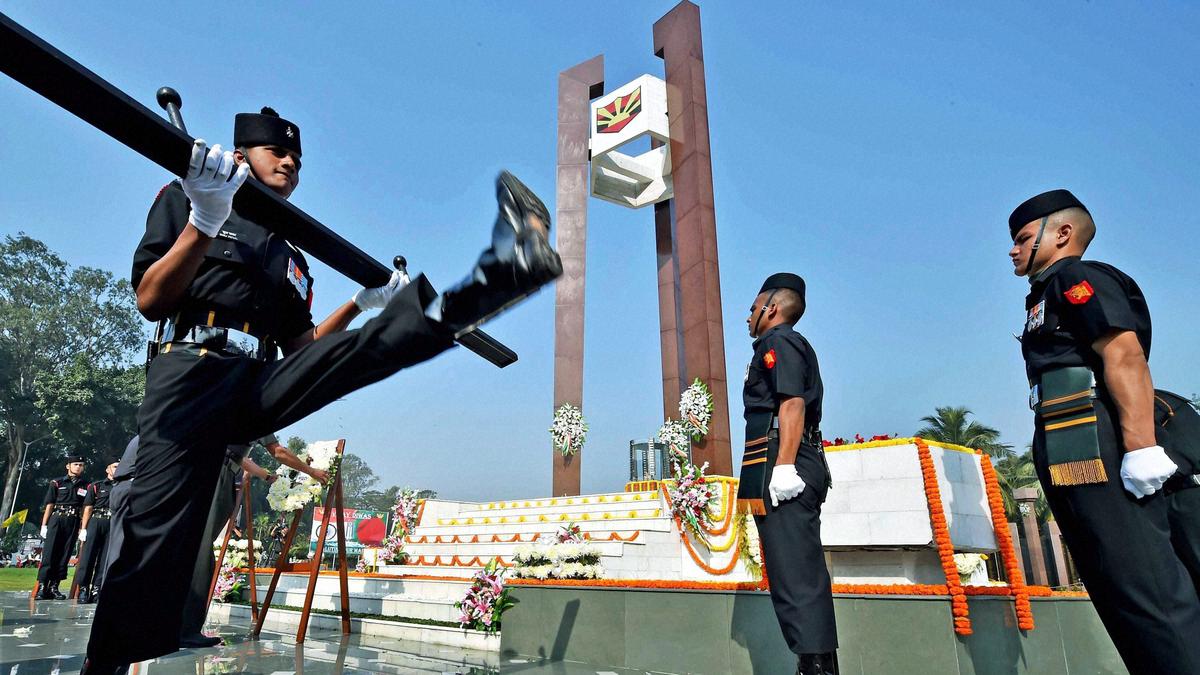
- 08 Feb 2025
In News:
In a significant step towards decolonising the Indian Armed Forces and aligning with indigenous historical consciousness, Fort William, the headquarters of the Eastern Command of the Indian Army in Kolkata, has been renamed Vijay Durg. This renaming is part of a broader initiative to remove colonial-era symbols and practices and restore Indian military heritage.
Historical Background of Fort William
- Construction: The original Fort William was constructed in 1696 by the English East India Company. It was later attacked and captured by Siraj-ud-Daulah, the Nawab of Bengal, in 1756.
- The Black Hole Incident: The original fort had an inner bastion used for imprisoning captives, leading to the infamous “Black Hole of Calcutta” narrative.
- Reconstruction: After the Battle of Plassey (1757) and the defeat of Siraj-ud-Daulah, Robert Clive initiated the construction of a new fort, which was completed in 1773 or 1781 (sources differ).
- Naming: It was named Fort William in honour of King William III of England.
Architectural Features
- Design: The fort is octagonal in shape with a massive structure made of brick and mortar.
- Area: Spread across 70.9 acres on the eastern bank of the Hooghly River, it features hundreds of arched windows and lush green surroundings.
- Aesthetics: Its walls are adorned with intricate stonework, reflecting colonial military architecture.
Recent Changes and Renaming
- New Name: Vijay Durg – Inspired by Vijaydurg Fort in Maharashtra, a prominent naval base of the Marathas under Chhatrapati Shivaji Maharaj.
- Other Changes:
- Kitchener House has been renamed Manekshaw House, after Field Marshal Sam Manekshaw.
- St. George’s Gate has been renamed Shivaji Gate.
- Implementation: According to the Defence Public Relations Office in Kolkata, the name change was decided in mid-December 2024, and internal communications have already adopted the new nomenclature, though an official notification is awaited.
Broader De-Colonisation Drive in Indian Defence
The renaming of Fort William is part of a larger movement initiated by the Government of India to eliminate colonial vestiges in the armed forces. Prime Minister Narendra Modi, in a 2022 speech at Kevadia, Gujarat, urged the forces to discard “legacy systems” and move towards “freedom from the mentality of slavery (gulami ki mansikta se mukti)”.
Key Initiatives:
- Indianisation of military music during the Beating Retreat ceremony.
- Adoption of a new naval ensign (2022) inspired by the seal of Chhatrapati Shivaji Maharaj, moving away from British colonial symbols.
- Renaming of military establishments and symbols rooted in colonial heritage.
- Review publication (2024) titled “Colonial Practices and the Armed Forces – A Review”, released at the Joint Commanders’ Conference in Lucknow by Defence Minister Rajnath Singh.
Dhimsa Dance
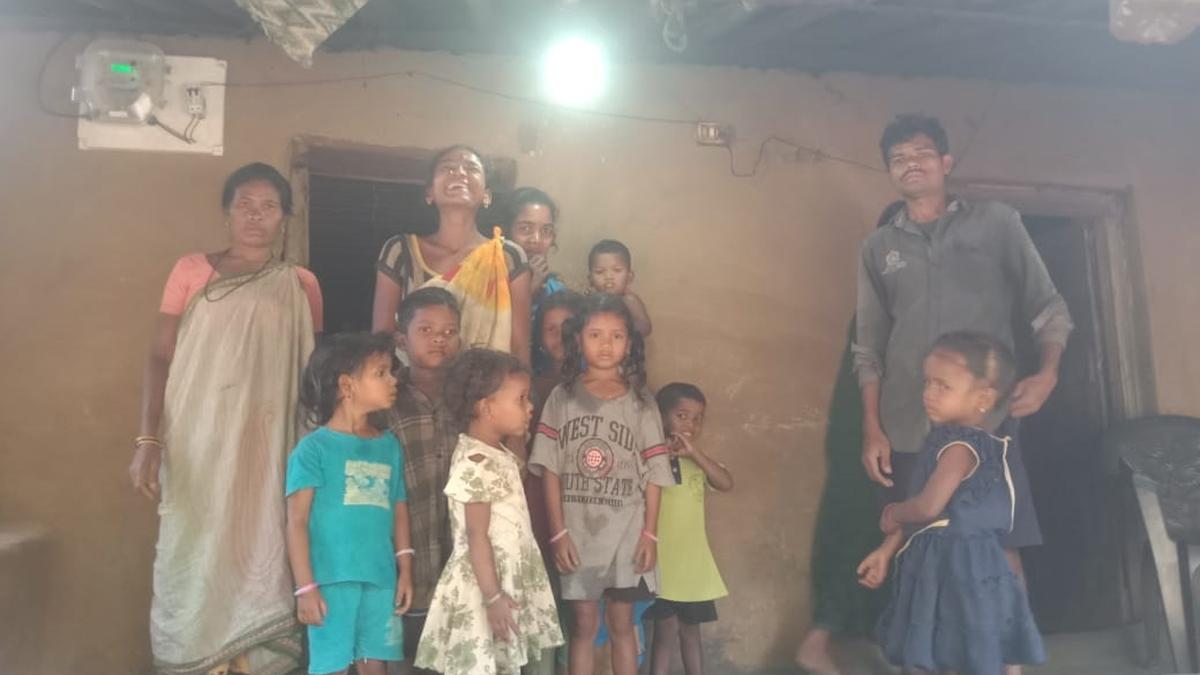
- 06 Feb 2025
In News:
In a significant development, tribal families from Neelabandha, a remote hilltop hamlet in Anakapalli district, Andhra Pradesh, received electricity for the first time since Independence. In celebration, they performed the Dhimsa dance, a vibrant expression of tribal culture.
About Dhimsa Dance:
- Origin & Region:
- Dhimsa is a traditional tribal dance predominantly performed in Andhra Pradesh, especially in the tribal belts of the Eastern Ghats.
- Its origin can be traced to the Koraput region (present-day Odisha and bordering Andhra Pradesh), primarily home to the Gond tribe.
- Communities Performing Dhimsa:
- Tribes such as Bagata, Valmiki, Poraja, Khond, Gadaba, Kondadora, Mukadora, and Kotia actively perform this dance.
- Occasions:
- Commonly performed during festivals, weddings, and the hunting festival in April.
- Celebratory, spiritual, and social in nature, symbolizing unity and joy.
- Dance Formation and Movements:
- Performed in circular formations with dancers holding each other's arms.
- Emphasis on synchronized hand and leg movements.
- Troupes usually consist of 20 or more dancers.
- Themes:
- Dhimsa is a narrative dance that expresses tribal mythologies, folktales, cultural mores, economic activities, kinship, and marital life.
- Musical Instruments Used:
- Dappu, Tudumu, Mori, Kidgi, Gilka, and Jodukommulu.
- A combination of percussion and wind instruments drives the rhythm and variation in the dance.
- Varieties:
- There are 12 known types of Dhimsa dances, each varying in pace, rhythm, and purpose.
Rural Electrification of Neelabandha Village:
- Background:
- Neelabandha is located in Arla Panchayat of Rolugunta Mandal in Anakapalli district.
- Consists of four households (approximately 20 individuals) who had been living without electricity since Independence.
- Implementation:
- The electrification was part of the Andhra Pradesh government’s rural development drive to provide basic infrastructure to underdeveloped tribal villages.
- Under the directions of District Collector Vijaya Krishnan, and CMD of APEPDCL, Prithvi Tej, the Eastern Power Distribution Company of Andhra Pradesh (EPDCL) carried out the electrification.
- Challenges Overcome:
- The hamlet lacked motorable roads, making it difficult to transport materials.
- Electricity poles had to be carried manually for over 6 km to reach the village.
- Outcome:
- Free electricity was provided to the villagers, marking a major milestone in tribal welfare.
- In a heartfelt celebration, the villagers performed Dhimsa under electric lights for the first time.
Issues Still Persisting:
- Infrastructure Deficits:
- The village still lacks road connectivity, educational access, and healthcare facilities.
- These gaps hinder children's ability to attend school and access essential services.
- Community Response:
- Local leaders, including CPI(M) district committee member K. Govind, welcomed the electrification but urged the government to address remaining developmental needs.
Gyan Bharatam Mission
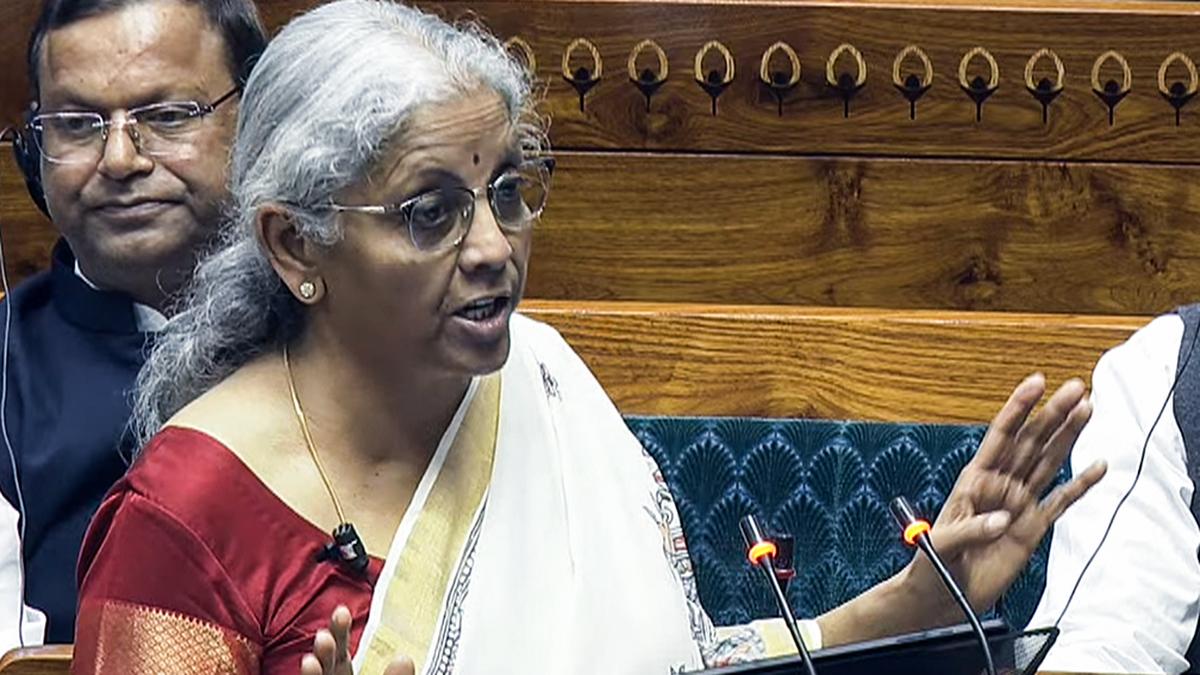
- 06 Feb 2025
In News:
The Union Budget 2025–26 announced the launch of the Gyan Bharatam Mission, a significant cultural initiative aimed at the survey, documentation, digitization, and conservation of over one crore manuscripts across India.
Key Details:
- A special national mission focusing on India’s manuscript heritage preserved in:
- Academic institutions
- Libraries
- Museums
- Private collections
- Objective:
To document and conserve more than one crore manuscripts, centralize them into a national digital repository, and make them accessible to researchers, students, and institutions globally. - Significance:
- Facilitates knowledge-sharing through digitization.
- Promotes India's traditional knowledge systems.
- Enhances academic and historical research in the Indian knowledge domain.
What is a Manuscript?
- A manuscript is a handwritten composition on materials such as:
- Palm leaf, paper, cloth, bark, or metal.
- Must be at least 75 years old and possess scientific, historical, or aesthetic value.
- Printed texts and lithographs are not considered manuscripts.
- Manuscripts may exist in hundreds of languages and scripts, e.g.:
- Sanskrit manuscripts written in Devanagari, Grantha, Oriya, and other scripts.
- Unlike epigraphs or official records (firmans, revenue documents), manuscripts hold knowledge content, not just historical data.
National Manuscripts Mission (NMM)
- Launched in 2003 under the Ministry of Culture, operated through the Indira Gandhi National Centre for the Arts (IGNCA).
- Mandate: Identify, preserve, and make accessible India's manuscript wealth.
- Revival: The 2025–26 Budget seeks to rejuvenate NMM to implement the Gyan Bharatam Mission effectively.
Budgetary Provisions
- NMM allocation increased from ?3.5 crore to ?60 crore for FY 2025–26.
- Culture Ministry overall allocation:
- ?3,360.96 crore, up from a revised estimate of ?3,260.93 crore.
- Other Key Allocations:
- Archaeological Survey of India (ASI): ?1,278.49 crore
- National Libraries and Archives: ?156.55 crore
- Museums (National Museum, NGMA): ?126.63 crore
- Note: Allocations for centenary events, cultural collaborations have been reduced.
Libia Lobo Sardesai
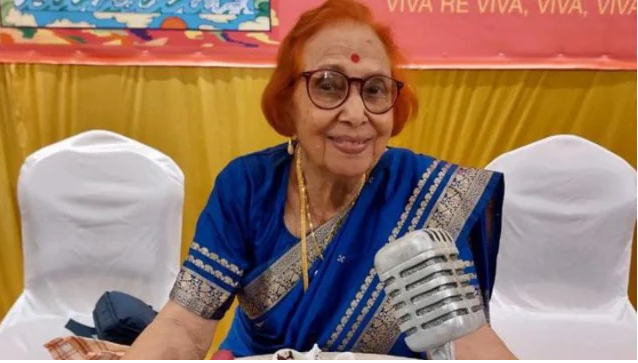
- 28 Jan 2025
In News:
In 2024, at the age of 100, Libia Lobo Sardesai was awarded the Padma Shri for her pivotal role in Goa’s liberation struggle from Portuguese colonial rule.
About Libia Lobo Sardesai
- Born: 25 May 1924, in Portuguese-ruled Goa; raised in Mumbai.
- Profession: Freedom fighter, broadcaster, and Goa’s first Director of Tourism post-liberation.
- Legacy: Symbol of courage and resistance, known as the “voice of Goa’s liberation.”
Role in Goa’s Liberation Movement
- Involvement: Joined the Goan nationalist movement during her college years.
- Underground Radio:
- From 1955 to 1961, Libia, along with her husband Vaman Sardesai and Nicolau Menezes, ran an underground radio station – initially called ‘Q’, later named:
- Goenche Sodvonecho Awaz (Voice of Freedom of Goa) – Konkani
- Voz de Liberdade – Portuguese
- Operated from Amboli (Maharashtra) and Castle Rock (Karnataka) in the Western Ghats.
- Purpose: Counter Portuguese censorship and propaganda; broadcast news, updates, and morale-boosting messages to Goans.
- From 1955 to 1961, Libia, along with her husband Vaman Sardesai and Nicolau Menezes, ran an underground radio station – initially called ‘Q’, later named:
- Final Broadcast:
- On 19 December 1961, Libia flew over Panaji in an IAF plane, announcing Goa’s liberation with the message:
“Rejoice brothers and sisters, Rejoice! Today, after 451 years of alien rule, Goa is free and united with the Motherland.”
Goa Liberation Movement: Background
- Colonial Rule: Goa was under Portuguese rule for over 451 years (from 1510 to 1961).
- Key Phases:
- 1954: India imposed an economic blockade after Portuguese crackdown on satyagrahis.
- August 1955: Mass satyagraha met with violent repression by Portuguese forces.
- Censorship: Portuguese regime enforced total censorship; only official Portuguese narratives were allowed.
- 1961 – Operation Vijay:
- Initiated on 17 December 1961 by the Indian Army under Lt. Gen. J.N. Chaudhuri.
- Portuguese forces surrendered by 19 December 1961, marking Goa’s official liberation.
Notable Leaders of the Movement
- Dr. Ram Manohar Lohia: Sparked initial resistance against Portuguese rule.
- Libia Lobo Sardesai: Voice of the resistance via underground broadcasting.
- Lt. Gen. J.N. Chaudhuri: Led military operations during Operation Vijay.
Significance
- Libia Lobo Sardesai represents the unsung contributions of civil resistance and communication warfare in India’s decolonization.
- Her work sustained nationalist morale, informed citizens under censorship, and shaped the narrative of a liberated Goa.
Ratnagiri Buddhist Site
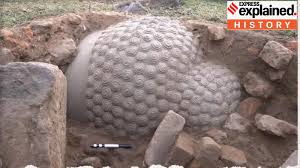
- 19 Jan 2025
In News:
The Archaeological Survey of India (ASI) has resumed excavations at the ancient Buddhist site of Ratnagiri in Odisha’s Jajpur district, unveiling monumental discoveries that underline its rich religious, cultural, and maritime legacy. This renewed effort comes more than 60 years after the site was first excavated between 1958 and 1961.
About Ratnagiri
- Meaning: Ratnagiri translates to “Hill of Jewels.”
- Location: Situated on a hill between the Brahmani and Birupa rivers, northeast of Bhubaneswar.
- Part of the Diamond Triangle: Along with Lalitgiri and Udaygiri, Ratnagiri forms Odisha’s famed “Diamond Triangle” of Buddhist heritage sites.
- Historical Period: Flourished between the 5th and 13th centuries CE, peaking under the Bhauma-Kara dynasty (8th–10th century CE).
- Buddhist School: An important centre for Mahayana and especially Vajrayana (Tantrayana) Buddhism.
- It possibly rivalled Nalanda in prominence as a Buddhist learning centre.
- The monastery complex at Ratnagiri is the only one in India with a curvilinear roof, once housing about 500 monks.
Recent Discoveries by ASI
- Three colossal Buddha heads, each measuring 3–4 feet.
- A massive palm sculpture, 5 feet in size.
- Hundreds of votive stupas, sculptures of Buddhist deities.
- A monolithic elephant statue, 5 feet long and 3.5 feet tall.
- Pottery, inscribed stones, beads, stone pillars, and a brick wall believed to be part of a larger structure.
- Rich ceramic assemblages, which may shed light on the region’s cultural and technological evolution.
These artefacts are estimated to date back to the 8th and 9th centuries CE and are believed to enhance understanding of Buddhism’s evolution in Odisha and its linkages with other cultures.
Buddhism in Odisha & Southeast Asian Links
- Buddhism gained a strong foothold in Odisha after Emperor Ashoka’s conquest of Kalinga (modern-day Odisha) in 261 BCE, a turning point that led him to embrace Buddhism.
- Though Buddha never visited Odisha, the region became instrumental in spreading Buddhism to Southeast Asia, especially during the Bhauma-Kara period.
- The state maintained robust maritime trade and cultural links with regions like Java, Bali, Sumatra, Borneo, Myanmar, and Sri Lanka.
- Baliyatra Festival: A vibrant annual event held in Cuttack, commemorating Odisha’s ancient seafaring ties with Bali and other Southeast Asian regions.
- According to some studies, Chinese monk Hiuen Tsang may have visited Ratnagiri during his travels in India (638–639 CE).
Significance of the Renewed Excavations
- The ASI aims to uncover partially visible structures, complete the site’s mapping, and contextualize the findings within the broader Buddhist history of India and Southeast Asia.
- Researchers hope to discover signs of foreign architectural or cultural influences, further confirming ancient Odisha’s global Buddhist and trade connections.
- The discoveries reaffirm Ratnagiri’s importance as a cornerstone of Buddhist learning and art, potentially on par with other renowned ancient centres like Nalanda and Vikramashila.
Kuka Rebellion and Namdhari Sect
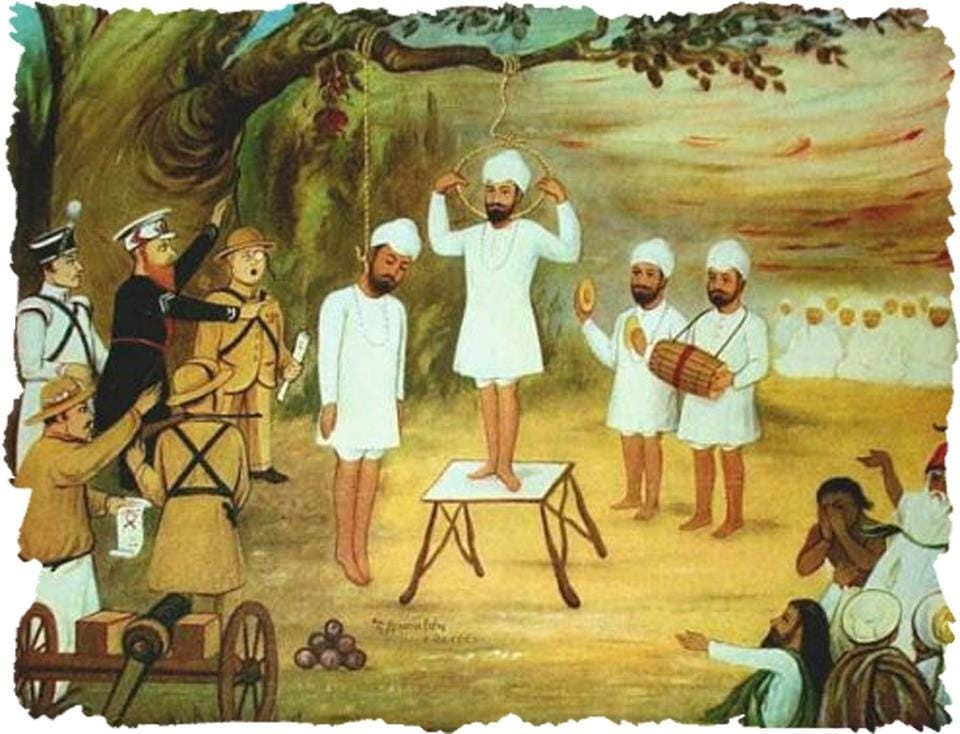
- 18 Jan 2025
In News:
On January 17, Punjab Chief Minister Bhagwant Mann paid tribute at the Namdhari Shaheed Smarak in Malerkotla to commemorate Kuka Martyrs’ Day. The event marks the execution of 66 Namdhari Sikhs by the British in January 1872.
Kuka Rebellion: An Overview
The Kuka Rebellion was an anti-British movement led by the Namdhari sect in Punjab. It combined religious reform with resistance to colonial rule, reaching its peak in January 1872.
Key Events:
- January 13, 1872: Kukas, led by Hira Singh and Lehna Singh, protested against cow slaughter in Malerkotla.
- January 15, 1872: Clashes occurred between Kukas and government officials. A contingent attacked Malaudh Fort but was repulsed.
- January 17-18, 1872: 66 Kukas were executed by being blown up with cannons under orders of British official John Lambert Cowan.
Reasons Behind the Movement:
- Religious Reform: Opposed meat consumption, alcohol, and social vices.
- Colonial Oppression: Protested against British rule and native collaborators.
- Cow Protection: Strongly opposed cow slaughter, leading to confrontations with British authorities.
Impact and Aftermath:
- Suppression: The British crushed the movement with extreme brutality.
- Exile of Leaders: Satguru Ram Singh and other key leaders were exiled to Rangoon, Burma.
- Legacy of Martyrdom: The sacrifice of young Namdharis like 12-year-old Bishan Singh and Waryam Singh inspired future resistance movements in India.
Who are the Namdharis?
The Namdharis, also called Kukas, are a Sikh sect founded by Satguru Ram Singh in 1857 in Ludhiana. Their distinctive practices include:
- High-pitched recitation of Gurbani (hence the name ‘Kuka’ meaning ‘crying’ or ‘screaming’ in Punjabi).
- Wearing white attire as a sign of mourning for their exiled leader.
- Early adoption of Swadeshi principles, boycotting British goods and services.
Current Status of Namdhari Sect:
- The Namdharis, numbering around 2 lakh in Punjab today, have faced internal divisions since the death of Satguru Jagjit Singh in 2012.
- Two major factions exist:
- One led by Thakur Dilip Singh, headquartered in Sirsa, Haryana.
- Another led by Sangrur Uday Singh, headquartered at Bhaini Sahib, Ludhiana.
- A core belief remains that Satguru Ram Singh is still alive and will return one day.
Significance:
The Kuka Rebellion, though localized, was an important precursor to later national movements against British rule. It showcased the early spirit of resistance, long before organized freedom movements gained momentum in the 20th century.
Makaravilakku festival
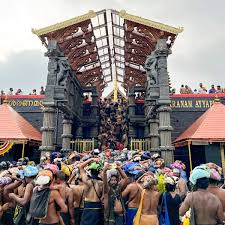
- 15 Jan 2025
In News:
Kerala police deploy 5,000 personnel at Sabarimala ahead of Makaravilakku festival.
Key Highlights:
- Makaravilakku is a prominent annual Hindu festival held at the Sabarimala Temple in Kerala, dedicated to Lord Ayyappa.
- It marks the celestial event of the Sun entering Capricorn (Makaram Rashi) on Makara Sankranti.
- The festival is a culmination of the 41-day pilgrimage to Sabarimala, celebrated with devotion, discipline, and spiritual purification.
- Sabarimala is one of the largest pilgrimage sites globally, drawing 10-15 million devotees annually.
Location:
- The Sabarimala Temple is located on the Sabarimala hill in Pathanamthitta, Kerala, within the Periyar Tiger Reserve.
- It is surrounded by 18 hills and is located along the banks of the Pamba River.
Key Rituals:
- 41-Day Pilgrimage (Vratham): Devotees observe strict practices like celibacy, fasting, and wearing black or saffron attire to purify the body and soul.
- Makaravilakku (Makara Jyothi): A celestial light appears on Makara Sankranti, believed to be a divine manifestation of Lord Ayyappa.
- Thiruvabharanam Procession: On Makaravilakku day, sacred royal ornaments (Thiruvabharanam) are carried in a procession from the Pandalam Palace to the temple.
- Aarti at Ponnambalamedu: The Makaravilakku light is believed to emanate from camphor lit during the Aarti ritual at Ponnambalamedu, viewed three times from Sabarimala.
Festival Duration:
- The Makaravilakku festival lasts for seven days, starting on Makara Sankranti and concluding with the Guruthi offering, which propitiates the gods of the wilderness.
Significance of Makaravilakku:
- The festival symbolizes the merging of celestial and spiritual energies, highlighting devotion, purity, and self-discipline.
- Devotees chant the mantra "Swamiye Saranam Ayyappa," seeking blessings and protection from Lord Ayyappa.
- The event promotes equality, as all devotees wear simple black or blue attire and carry the sacred bundle, “Irumudi Kettu.”
Cultural and Religious Aspects:
- The festival is an important cultural and religious observance for millions of Hindus.
- Though previously believed to be a supernatural event, Makaravilakku now involves a ritual performed by the Malayaraya tribe, overseen by the Travancore Devaswom Board.
Prohibition on Women:
- The temple traditionally restricts women aged 10-50 from entering. This was challenged in 2018 when the Supreme Court ruled to lift the prohibition, although it remains a contentious issue.
National Youth Day 2025

- 13 Jan 2025
In News:
On January 12, 2025, Prime Minister Shri Narendra Modi participated in the Viksit Bharat Young Leaders Dialogue 2025, an event aimed at empowering India's youth and charting a roadmap for the nation's development. This occasion also coincided with the celebration of National Youth Day, marking the 163rd birth anniversary of Swami Vivekananda, a renowned spiritual leader and social reformer who strongly believed in the transformative potential of India's youth.
Significance of National Youth Day
- Purpose:
- National Youth Day is celebrated to honor Swami Vivekananda's contributions, emphasizing the role of youth in nation-building.
- It promotes empowerment, leadership, and innovation among the youth.
- Year of First Celebration: 1985
- Key Theme (2025): "Arise, Awake, and Realize the Power You Hold"
Key Highlights from the Dialogue
- Goal of the Dialogue:
- Engaging youth in the decision-making process for a developed India by 2047.
- Empowering youth through platforms like quizzes, essay competitions, and thematic presentations.
- Ten Key Themes Discussed:
- Technology & Innovation
- Sustainability
- Women Empowerment
- Manufacturing & Agriculture
- Education and Skill Development
India’s Roadmap for 2047 (Viksit Bharat)
- Vision:
- Economic Power: India is moving toward becoming the third-largest economy.
- Strategic and Cultural Strength: India will have a robust economic, strategic, social, and cultural framework.
- Youth's Role: Innovation in technology, digital economy, space, and manufacturing will drive India’s growth.
- Key Projects and Targets:
- Target: Generating 500 GW of renewable energy by 2030.
- Net Zero Emissions for Railways: Set for 2030.
- Olympics: India aims to host the Olympics in the next decade.
- Space Power: Plans for a space station by 2035.
Viksit Bharat Young Leaders Challenge
- Objective:
- Engage youth in shaping ideas for a developed India.
- The Viksit Bharat Young Leaders Dialogue is part of the Viksit Bharat Challenge.
- Stages of the Challenge:
- Viksit Bharat Quiz: Participation by 30 lakh youth.
- Essay Writing: Over 2 lakh essays on key developmental themes.
- State Rounds: Rigorous in-person competition to identify the top young leaders.
- Participant Categories:
- 1,500 from Viksit Bharat Challenge Track.
- 1,000 from Traditional Track (cultural and science innovation).
- 500 Pathbreakers (leaders in diverse sectors).
Achievements Under Government Benefiting Youth
- Educational Reforms:
- Increase in IITs, IIITs, IIMs, and AIIMS.
- Growth in the number of higher education institutions and their global rankings.
- Economic Growth:
- India's economy has grown to nearly $4 trillion.
- Infrastructure Investments: More than ?11 lakh crore allocated for infrastructure development.
- Employment Opportunities for Youth:
- Mudra Loans: ?23 lakh crore distributed to youth entrepreneurs.
- Startup Ecosystem: India is among the top three in global startups.
- PM Gati Shakti Mission: Facilitating logistics and infrastructure development, creating employment opportunities.
Future Outlook
- Youth as the Future Leaders of India:
- India’s Youth Power: Vital to achieving a developed nation by 2047.
- The Viksit Bharat Young Leaders Dialogue is a platform for youth to voice their opinions and engage with policymakers.
- Role of Youth in India’s Transformation:
- Collective Responsibility: Every citizen's effort is essential for national goals.
- The vision of a Viksit Bharat hinges on the innovative contributions and ownership by young minds.
Flamingo Festival 2025
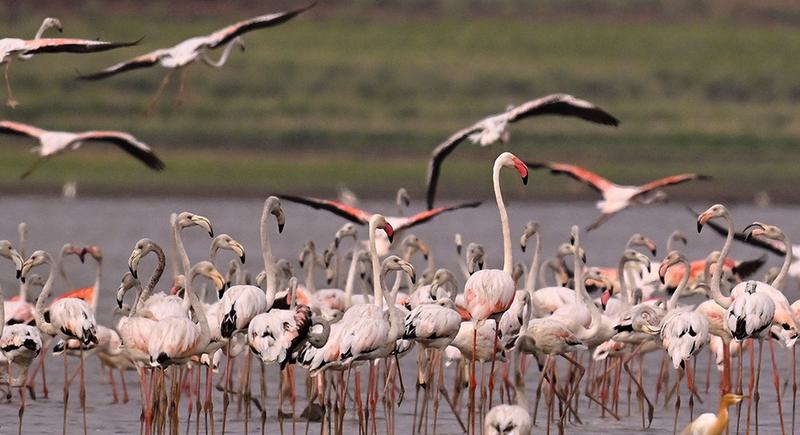
- 10 Jan 2025
In News:
The Flamingo Festival 2025 took place at Sullurpeta, in Tirupati district, Andhra Pradesh. It celebrates the arrival of migratory birds, with a focus on flamingos, to the region's key bird habitats, including Pulicat Lake and Nelapattu Bird Sanctuary.
Key Highlights:
- Birdwatching: Over 200 bird species, including flamingos, are expected to flock to the region during this festival.
- Locations: The event spans across five locations:
- Nelapattu Bird Sanctuary
- B.V. Palem (Pulicat Lake)
- Atakanithippa
- Sri City
- Sullurpeta (site for cultural programs and stalls)
- Collaborations: In association with organizations like the Bombay Natural History Society.
- Focus on Local Community: Local residents of the eco-sensitive zone will be prioritized and supported.
Key Facts on Local Wildlife and Significance:
- Pulicat Lake:
- Location: On the Andhra Pradesh-Tamil Nadu border, with 96% of the lake in Andhra Pradesh.
- Significance: The second-largest brackish water lake in India (after Chilika Lake in Odisha).
- Biodiversity: Critical habitat for migratory birds, including flamingos, and home to diverse flora and fauna.
- Economic Importance: Supports local fisheries and provides livelihood to nearby communities.
- Nelapattu Bird Sanctuary:
- Location: 20 km north of Pulicat Lake.
- Ecological Role: Largest breeding site in Southeast Asia for spot-billed pelicans.
- Biodiversity: 189 bird species, including painted storks and glossy ibises.
- Flora and Fauna: Features Barringtonia swamp forests and southern dry evergreen scrub, critical for biodiversity conservation.
- Symbiotic Relationship with Locals: Guano (bird droppings) from pelicans serves as a natural fertilizer for local agriculture, benefiting the farmers.
Flamingo Facts:
- Species: India hosts two flamingo species:
- Greater Flamingo (larger size, pale pink)
- Lesser Flamingo (smaller size, bright pink)
- Behavior: Nomadic and social birds, found in large flocks.
- Coloration: Flamingos' pink color comes from carotenoids in their diet, which are broken down and absorbed into their bodies.
Environmental & Economic Impact: The festival, apart from being a celebration of migratory birds, plays a vital role in:
- Eco-tourism development
- Biodiversity conservation
Local community engagement by highlighting sustainable tourism practices and supporting local livelihoods through eco-friendly initiatives like the Mahatma Gandhi National Rural Employment Guarantee Scheme (MGNREGS).
Toda Tribe
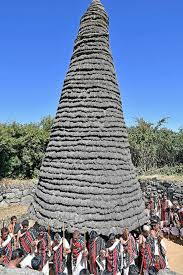
- 11 Jan 2025
In News:
- The Toda tribe, one of the oldest Dravidian ethnic groups in the Nilgiris Hills of Tamil Nadu, celebrated their traditional Modhweth festival marking the New Year.
What is the Modhweth Festival?
- About:
- Celebrated annually on the last Sunday of December or the first Sunday of January.
- Held at the Moonpo temple in Muthanadu Mund village, Nilgiri district.
- The Moonpo temple features a unique vertical spire with a thatched roof and a flat stone on top, making it one of the last Toda temples of its kind in the Nilgiris.
- Rituals and Celebrations:
- Prayers are offered to the deity, Thenkish Amman, for good health, rains, and bountiful harvest.
- Participants perform a traditional dance outside the temple.
- Unique Customs:
- Toda youth showcase their strength and masculinity by lifting a greased boulder weighing around 80 kg.
- Women are not part of the celebrations as per traditional customs.
What is the Toda Tribe?
- About:
- A pastoral tribe native to the Nilgiri Hills of Tamil Nadu.
- Classified as a Particularly Vulnerable Tribal Group (PVTG) in Tamil Nadu.
- The Toda language is Dravidian but stands out for its uniqueness among Dravidian languages.
- Significance:
- Toda lands are part of the Nilgiri Biosphere Reserve, a UNESCO International Biosphere Reserve.
- Their territory is also recognized as a UNESCO World Heritage Site.
- Religion and Beliefs:
- Their religious practices are based on a pantheon of gods, with Tökisy (goddess) and Ön (god of the underworld) as central deities.
Nilgiri Biosphere Reserve (NBR)
- About:
- Established in 1986 as India’s first Biosphere Reserve.
- Located across Tamil Nadu, Karnataka, and Kerala.
- India’s first biosphere reserve under UNESCO’s Man and the Biosphere Programme.
- Tribal Groups in NBR:
- Home to several groups such as Adiyan, Aranadan, Kader, Kurichian, Kuruman, and Kurumbas.
- Ecological Significance:
- Represents the confluence of Afro-tropical and Indo-Malayan biotic zones.
- Fauna:
- Home to species like Nilgiri tahr, Nilgiri langur, gaur, Indian elephant, Nilgiri danio (freshwater fish), and Nilgiri barbare.
- Protected Areas in NBR:
- Mudumalai Wildlife Sanctuary, Wayanad Wildlife Sanctuary, Bandipur National Park, Nagarhole National Park, Mukurthi National Park, and Silent Valley.
Saint Narahari Tirtha
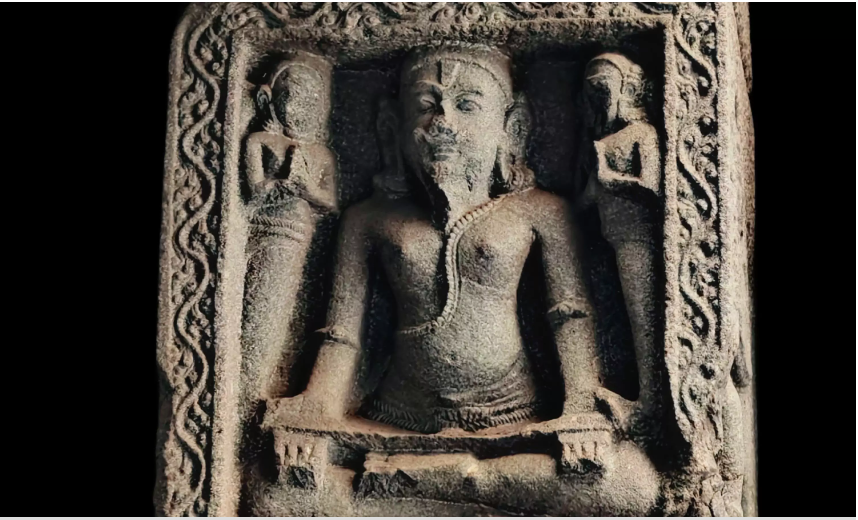
- 05 Jan 2025
In News:
In a remarkable discovery, a member of the Team of Research on Culture and Heritage (TORCH) has hit upon a three-foot idol of the 13th Century saint, Narahari T?rtha recently.
Key Highlights:
Birth and Early Life:
- Born circa 1243 CE in Chikakolu (modern-day Srikakulam, Andhra Pradesh).
- Hailing from an aristocratic family in the Gajapati Empire of Odisha.
Philosophical Influence:
- A prominent disciple of Madhvacharya, the founder of Dvaita philosophy (dualism).
- Narahari Tirtha played a key role in propagating Madhva's Vaishnavism in Eastern India, particularly in the Kalinga region (modern-day Odisha and Andhra Pradesh).
Role in Eastern Ganga Dynasty:
- Served as a minister in the Eastern Ganga Dynasty for over 30 years.
- Guided kings to align their governance with Sanatana Dharma and reformed temple administration.
- His contributions are documented in inscriptions at the Simhachalam and Srikurmam temples.
Religious and Cultural Contributions:
- Played a key role in spreading Vaishnavism and Dvaita philosophy.
- First to compose Devaranamas in Kannada, marking a significant cultural contribution.
- Contributed to the development of Yakshagana Bayalata (a dance-drama) and the classical dance form that evolved into Kuchipudi.
Writings and Intellectual Legacy:
- Authored 15 works, with two surviving texts: Gita Bhasya and Bhavaprakasika.
- His teachings and writings significantly impacted the Madhva tradition and regional literature.
Discovery of the Idol:
- A three-foot idol of Narahari Tirtha was discovered at Simhachalam Temple in Visakhapatnam, Andhra Pradesh.
- The idol depicts Narahari Tirtha holding a script on palm leaves, flanked by devotees.
Contributions to Temple and Education:
- Transformed the Simhachalam Temple into a renowned center for Vaishnavism.
- Played a crucial role in safeguarding sacred idols like Moolarama and Moola Sita for Madhvacharya.
Cultural and Artistic Legacy:
- Promoted regional art forms, helping establish Kuchipudi as a classical dance style in Andhra Pradesh.
- Advocated for Yakshagana Bayalata, a form of dance-drama popular in coastal Karnataka.
Honors and Recognition:
- Bestowed titles such as "Loka Surak?a?a Ati Nipu?a?" and "Yo Avati Kalinga Bhu Sambhav?n" for his contributions to philosophy and governance.
Final Resting Place:
- Narahari Tirtha was consecrated near Chakratirtha at Hampi on the banks of the Tungabhadra River after his death.
- His legacy continues to influence the temple traditions, especially in Puri Jagannath, strengthening the Madhva influence in Odisha.
Thanthai Periyar Memorial

- 05 Jan 2025
In News:
In a significant event for both Kerala and Tamil Nadu, Kerala Chief Minister Pinarayi Vijayan and Tamil Nadu Chief Minister M.K. Stalin are set to reunite at Vaikom, to inaugurate the extensively renovated memorial dedicated to Tamil reformist E.V. Ramasami Naicker, popularly known as Thanthai Periyar. This marks a historic occasion over a year and a half after they jointly inaugurated the centenary celebrations of the Vaikom Satyagraha.
Key Highlights:
Memorial History and Significance:
- Established: January 1994
- Location: 70-cent property near Valiyakavala Junction, Vaikom
- Ownership: Tamil Nadu Government
- Periyar Statue: Installed in 1985 on 84 cents of land provided by Kerala government; remains the centerpiece.
- Historical Neglect: The memorial suffered from years of neglect before the renovation.
Role of Periyar in Vaikom Satyagraha:
- Vaikom Satyagraha (1924–1925):
- First organized movement for the rights of the ‘untouchable’ communities in India.
- Led by prominent leaders like T.K. Madhavan, K.P. Kesava Menon, and K. Kelappan.
- Periyar, alongside his wife Nagamma, joined the movement, seeking access to public roads leading to the Sri Mahadeva Temple in Vaikom.
- Periyar’s Contribution:
- Was imprisoned twice for his participation in the movement.
- Honored with the title Vaikom Veeran for his leadership.
- Impact: The movement played a crucial role in securing social equality for all sections of society.
Periyar’s Legacy:
- Self-Respect Movement: Founded by Periyar to promote social equality and eliminate caste-based discrimination.
- Dravidar Kazhagam: A political and social organization founded by Periyar, advocating for the rights of the Dravidian people.
- Father of the Dravidian Movement: Periyar’s philosophy and activism laid the foundation for the Dravidian political ideology and social reforms in Tamil Nadu.
Tamil Nadu's First Glass Bridge in Kanyakumari
- 02 Jan 2025
In News:
- The Chief Minister of Tamil Nadu inaugurated India’s first glass bridge over the sea in Kanyakumari, connecting the Thiruvalluvar Statue and the Vivekananda Rock Memorial.
- The bridge provides a safe and scenic walking route between these two iconic landmarks, eliminating the need for ferry trips.
Key Highlights:
- Dimensions and Design
- The bridge is 77 meters long and 10 meters wide, offering uninterrupted views of the sea from a unique vantage point.
- Designed to withstand marine conditions like corrosion and strong winds, ensuring durability and safety for visitors.
- Tourism Investment
- The bridge was built at a cost of ?37 crore, marking a significant investment in tourism infrastructure for Kanyakumari.
- This project aligns with the state’s vision to boost tourism and modernize amenities in the region.
- Significance as a Tourist Attraction
- The bridge is set to become a landmark tourist attraction, enhancing the visitor experience by providing a direct, scenic route between the two monuments.
- It is expected to play a pivotal role in boosting tourist footfall and the local economy.
About Thiruvalluvar Statue
- Location and Design
- The Thiruvalluvar Statue stands on a rock near the Vivekananda Rock Memorial in Kanyakumari.
- It is a symbol of wisdom, officially named the Statue of Wisdom by the Tamil Nadu government.
- Physical Specifications
- The statue stands at a total height of 133 feet (41 meters), with the statue itself measuring 95 feet (29 meters) and the pedestal adding 38 feet (12 meters).
- Weight: The statue weighs approximately 7000 tonnes and is designed in a hollow structure.
About Vivekananda Rock Memorial
- Location and Significance
- Situated on a rock in the Laccadive Sea, around 500 meters from the mainland in Kanyakumari.
- The memorial commemorates Swami Vivekananda, who represented India’s spiritual legacy at the 1893 Parliament of World’s Religions in Chicago.
- Historical and Religious Importance
- The rock is believed to be the site where Swami Vivekananda attained enlightenment.
- It is also associated with goddess Kanyakumari, who is said to have prayed to Lord Shiva on this rock, with an imprint of her feet preserved there.
- Architectural Features
- The memorial incorporates diverse architectural styles, including the Sripada Mandapam and the Vivekananda Mandapam.
- A life-sized bronze statue of Swami Vivekananda is located at the memorial.
- The rock is surrounded by the Bay of Bengal, Indian Ocean, and Arabian Sea, where these three water bodies converge.
ASI Discovery at Srisailam Temple
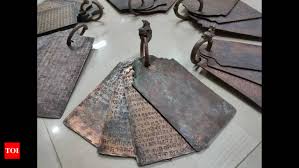
- 30 Dec 2024
In News:
- The Archaeological Survey of India (ASI) uncovered ancient copper plates and gold coins at the Srisailam Temple in Andhra Pradesh, specifically in the Ghantamandapam area.
- The discovery includes 20 sets of copper plates, totaling 72 leaves, and various gold coins.
- The ASI's Epigraphy Branch in Mysore has completed the documentation of these findings, and the materials are being studied in detail.
Collaboration with Srisailam Devasthanam:
- In collaboration with the Srisailam Devasthanam, ASI plans to publish a book that will detail the findings and their historical significance.
- The book will be printed soon by Pragati Publications in Hyderabad.
Srisailam Temple Overview:
- The Srisailam Temple, also known as the Mallikarjuna Swamy Temple, is a prominent Hindu pilgrimage site in Andhra Pradesh.
- It is located in the Nallamala Hills, overlooking the Krishna River.
- The temple is dedicated to Lord Shiva in the form of Mallikarjuna Swamy and Goddess Parvati as Bhramaramba Devi.
- It is one of the 12 Jyotirlingas of Lord Shiva and one of the Shakti Peethas, making it significant in both Shaivism and Shaktism.
Architectural Significance:
- The temple is built in the Dravidian style, featuring lofty towers and expansive courtyards, and is considered a prime example of Vijayanagara architecture.
- Historical references to the temple date back to the Satavahana period (2nd century AD), and the temple was further endowed by the Kakatiyas and Vijayanagara rulers.
Cultural and Religious Importance:
- The Srisailam Temple is unique for housing both a Jyotirlinga (Lord Shiva) and a Shakti Peetha (Goddess Bhramaramba), a rare combination not found at other temples.
- The great religious figure Adi Shankaracharya is believed to have visited the temple and composed the Sivananda Lahiri there.
Historical Context:
- The copper plates and inscriptions discovered are likely to provide valuable insights into the historical and cultural significance of the temple, as well as the region's ancient religious practices.
Re-emergence of the Dodo in Kashmir’s Papier Mâché Craft
- 30 Dec 2024
In News:
Artisans in Srinagar, Kashmir, have revived the extinct dodo bird in papier mâché forms. These figurines are exported worldwide, particularly to Mauritius and Europe, ahead of the Christmas season. Over 50,000 dodo figurines have already been sent to international markets in 2024.
Key Highlights:
The Dodo:
- Scientific Name: Raphus cucullatus.
- Extinct Since: 1681, approximately 80 years after humans began interacting with them.
- Endemic to Mauritius: A flightless bird from the Indian Ocean island of Mauritius, a national symbol of the country.
- Extinction Causes: Overhunting and the introduction of invasive species like rats, pigs, and cats that preyed on their eggs.
- Physical Traits: Grey or brown plumage, about 3 feet tall, flightless and fearless.
Papier Mâché Craft in Kashmir:
- History: Practiced for over 600 years in Kashmir, introduced during the reign of King Zain-ul-Abidin (15th century).
- Techniques: Involves creating decorative objects using paper pulp, with traditional Persian motifs.
- Recent Addition of Dodo: The dodo was introduced to the papier mâché craft around two decades ago, likely by Mauritian tourists.
International Market and Demand:
- Mauritius: A significant market for the papier mâché dodo, as the bird is a national emblem of Mauritius.
- Europe: Exported to European countries during the Christmas season, contributing to the popularity of Kashmir’s handicrafts.
- Kashmir's Karkhanas: Local craft workshops in Srinagar are producing thousands of dodo figurines each season, with over 3,000 dodos produced this year.
Cultural and Economic Impact:
- Artisans' Contribution: Local artisans are helping keep the memory of the extinct dodo alive, while boosting Kashmir’s handicraft industry.
- Global Recognition: The dodo is now a sought-after item in global markets, linked to the traditional art of Kashmir.
- Kashmir Handicrafts: Several crafts from Kashmir, including papier mâché, have received Geographical Indication (GI) tags for their distinct cultural and regional significance.
ASI Decodes Sanskrit Inscription Found in Pakistan-Occupied Kashmir (PoK)
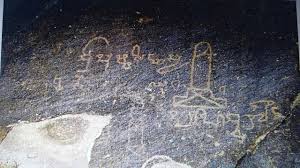
- 29 Dec 2024
In News:
An ancient Sanskrit inscription found in Gilgit (PoK) was decoded by the Archaeological Survey of India (ASI).
About the Inscription:
- Location:
- Gilgit (PoK): Written in Brahmi script, dating back to 4th century CE.
- Peshawar (Pakistan): Written in Sharada script, dating to 10th century CE.
- Details of Gilgit Inscription:
- Mentions Pushpasingha, who installed a Mahesvaralinga for the merit of his guru.
- Written in Brahmi script, which was prevalent during the 4th century CE.
- Religious Context: Indicates significant religious connection, particularly with Shaivism.
- Details of Peshawar Inscription:
- Fragmentary: Engraved on a slab.
- Written in Sharada characters (10th century CE).
- Mentions Buddhist Dharini (chants), particularly referring to Da (Dha) rini in line six.
- The inscription is partially damaged, and further details are unclear.
- Earlier Discoveries:
- This is not the first Sanskrit inscription decoded from Pakistan. In the past, Sanskrit inscriptions have been found in various parts of Pakistan.
- Swat Valley: Known for numerous Buddhist rock inscriptions in Sanskrit using Nagari script, which were part of the Gupta Empire (circa 240–550 CE).
- Religious and Cultural Implications:
- The Gilgit inscription provides evidence of Shaivism as a prominent religious practice in the region during the 4th century CE.
- The Peshawar inscription suggests Buddhist influences, particularly related to Buddhist chants and rituals.
- Swat Valley's Role: The inscriptions found here highlight its importance as a center of Buddhist learning and cultural exchange.
2023 National Tansen Samman
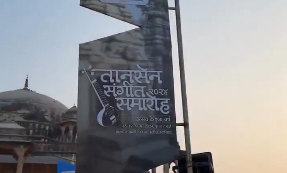
- 21 Dec 2024
In News:
- The prestigious National Tansen Samman for 2023 was conferred upon Pt. Swapan Choudhary, a renowned tabla maestro from Kolkata, at the National Tansen Festival held in Gwalior, Madhya Pradesh.
Key Highlights:
- Tansen Festival: This festival, renowned for its celebration of classical music, is organized annually in Gwalior, which is considered the music capital of Madhya Pradesh.
- Prize Details: As part of the honor, Pt. Swapan Choudhary was presented with an honorarium of five lakh rupees, a citation plaque, and a shawl-shriphal.
- About the Award:
- The National Tansen Samman was established in 1980 by the Madhya Pradesh government to recognize exceptional contributions to Indian classical music.
- It is named after Tansen, one of India's most celebrated classical musicians.
- The award is the highest national honor in the field of Indian classical music.
- Additional Award:
- Raja Mansingh Tomar Samman for 2023 was awarded to Sanand Nyas, an institution from Indore. This institution has been active for 35 years in the promotion of classical music, drama, and cultural festivals.
- Pt. Swapan Choudhary’s Remark: In response to receiving the honor, Pt. Choudhary expressed his gratitude and pride in joining the ranks of distinguished artists awarded the National Tansen Samman.
About Tansen: The Iconic Musician
- Legacy: Tansen, also known as Miyan Tansen, was a prominent Indian classical musician, composer, and vocalist. He is credited with popularizing several ragas and revolutionizing the Indian classical music tradition.
- Role at Akbar’s Court: Tansen was one of the Navaratnas (nine jewels) in the court of Mughal Emperor Akbar. He held the title of Mian, meaning "learned man," bestowed upon him by Akbar.
- Contributions:
- Tansen is famous for his compositions, including the introduction of notable ragas such as Miyan ki Malhar, Miyan ki Todi, and Darbari.
- He also improved the plucked rabab, which is of Central Asian origin, enhancing its role in Indian classical music.
- Historical Influence: Tansen's life and work are surrounded by extensive legend, and his contributions remain deeply influential in the development of Indian classical music today.
Vijay Diwas 2024
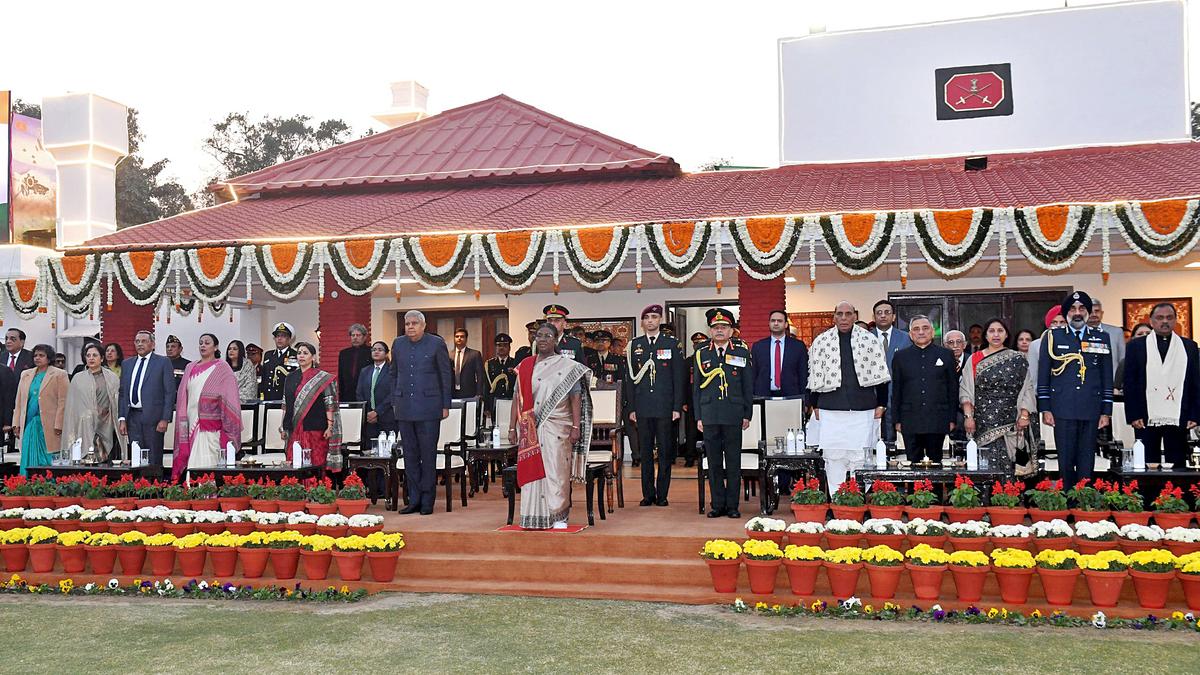
- 17 Dec 2024
In News:
On December 16, 2024, India commemorated Vijay Diwas, marking the 53rd anniversary of its victory in the 1971 Bangladesh Liberation War. This day honors the bravery and sacrifices of Indian soldiers and the Mukti Bahini, whose collective efforts led to the creation of Bangladesh as an independent nation. On this occasion, leaders across India, paid heartfelt tributes to the fallen heroes who contributed to the victory, and to the enduring India-Bangladesh friendship.
The 1971 Bangladesh Liberation War culminated in the surrender of over 90,000 Pakistani soldiers, and India’s victory is celebrated as a defining moment in South Asian history.
The War’s Historical Context:
The 1971 Bangladesh Liberation War was a pivotal conflict between East Pakistan (now Bangladesh) and West Pakistan (now Pakistan), leading to Bangladesh’s independence. It was a direct result of decades of social, political, and economic discrimination faced by East Pakistan, despite its larger population and contribution to Pakistan’s economy. Major events leading to the war included:
- Cultural and linguistic marginalization, with East Pakistan's Bengali language and identity being suppressed by the West.
- The 1970 elections that saw the Awami League, led by Sheikh Mujibur Rahman, win a decisive victory in East Pakistan, but their demand for greater autonomy was rejected by West Pakistan.
- The violent crackdown by the Pakistani military in Operation Searchlight in March 1971, leading to widespread atrocities and a mass exodus of refugees into India.
India’s Role in the War:
India’s involvement in the conflict was initially cautious, but the refugee crisis—with over 10 million people fleeing to India—forced India to take action. India provided humanitarian aid and supported the Mukti Bahini, a guerrilla force of Bangladeshi fighters. On December 3, 1971, Pakistan’s preemptive airstrike on Indian military bases led to India's retaliation and full-scale military involvement, including air and naval operations.
India’s military, with assistance from the Mukti Bahini, launched a decisive campaign, ultimately leading to Pakistan’s surrender on December 16, 1971, and the creation of Bangladesh.
Vijay Diwas Observances:
- The 53rd Vijay Diwas celebrations at Fort William, Kolkata, saw a Bangladeshi delegation—including Mukti Joddhas (freedom fighters)—reflect on their memories of the war, highlighting India's crucial role in the liberation of Bangladesh.
- The event also featured a wreath-laying ceremony, military tattoo, and a salute to the shared sacrifice and friendship between India and Bangladesh.
The 1971 Surrender Painting and New Symbolism:
In an interesting development, the iconic 1971 surrender painting, depicting the surrender of Pakistani forces in Dhaka, was moved from the Army Chief’s lounge to the Manekshaw Centre. The painting was replaced by Karam Kshetra–Field of Deeds, a new artwork symbolizing India’s strategic and cultural heritage. This new piece incorporates elements like Lord Krishna’s chariot, Chanakya, and modern military assets, reflecting India’s military prowess and heritage.
Zakir Hussain

- 16 Dec 2024
In News:
Ustad Zakir Hussain, the legendary tabla virtuoso, passed away at the age of 73 due to Idiopathic Pulmonary Fibrosis (IPF).
Key Highlights:
- Career Highlights:
- Born on March 9, 1951, to Ustad Alla Rakha, a renowned tabla maestro.
- Began tabla training at age 7, with early guidance from his father.
- Co-founded Shakti in 1973 with John McLaughlin, blending Indian classical music with Western influences, pioneering world music.
- Worked with global artists, including George Harrison, John McLaughlin, and Mickey Hart.
- Awarded four Grammy Awards, including three at the 66th Grammy Awards (2024), and honored with the Padma Vibhushan in 2023.
- A visiting professor at Stanford and Princeton universities.
- Musical Style:
- Transformed the tabla from a background instrument into a dynamic, expressive solo performance.
- Known for his complex rhythms and spontaneous performances, making tabla accessible and glamorous.
- Emphasized the concept of "hazri" (attendance) in the court of music, seeing his music as an offering to a higher power.
- Cultural Influence:
- His music was a bridge between traditional Indian classical and contemporary global sounds, impacting audiences worldwide.
- Played a pivotal role in the cultural exchange of Indian classical music, gaining fans and respect across the globe.
- Participated in projects such as the Taj Mahal tea commercials and "Desh Raag", symbolizing unity and diversity in India.
What is Idiopathic Pulmonary Fibrosis (IPF)?
- IPF is a chronic lung disease causing scarring of the lung tissue, leading to difficulty in breathing.
- Cause: The exact cause is unknown, hence termed "idiopathic" (unexplained).
- Risk Factors: Most common in older adults (over 50), men, and those with a history of smoking or viral infections.
About the Tabla:
- Structure: Composed of two drums—Tabla (right) and Bayan (left)—used primarily in Hindustani classical music.
- Material: Tabla has a wooden body, while Bayan can be made of clay or metal, both covered with animal skin and syahi paste.
- Role: Primarily accompanies vocal and instrumental performances, and is essential in various classical dance forms in northern India.
- Historical Note: Believed to have been invented by Amir Khusrau.
Prominent Tabla Players:
- Ustad Alla Rakha (father of Zakir Hussain).
- Zakir Hussain (himself).
- Shafat Ahmed and Samta Prasad.
Under the Sal Tree Theatre Festival
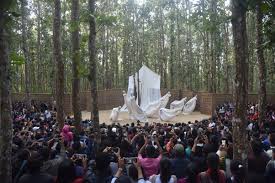
- 14 Dec 2024
In News:
“Under the Sal Tree” Theatre Festival, held annually in Rampur, Assam, promotes eco-friendly and sustainable practices in theatre while showcasing rich cultural diversity.
Overview:
- Location: Rampur village, Goalpara district, Assam
- Organizer: Badungduppa Kalakendra, a social and cultural organization
- Founded: 1998 by Sukracharjya Rabha
- Festival Focus: Eco-friendly theatre practices, cultural diversity, and sustainability
Key Features
- Unique Setting: Open-air festival under Sal trees, with no artificial lighting or electric sound systems.
- Sustainability:
- No use of plastic.
- Carbon-neutral, with eco-friendly materials such as bamboo, straw, and cane.
- Performances in natural daylight, avoiding electric lights.
- International Participation: Theatre groups from countries like Poland, South Korea, Brazil, Sri Lanka, Bangladesh, North Korea, Bolivia, and Holland have performed.
- Cultural Celebration: Highlights indigenous art forms, languages, and traditions, e.g., Rabha and Bodo plays.
Festival Activities
- Performances:
- Includes plays like “Dadan Raja” (Rabha language play), “Kindhan Charithiram” (Tamil), and “Kisan Raj” (Hindi).
- Focus on themes such as societal change and resilience of farmers.
- Workshops & Community Projects: For performing artists, promoting artistic innovation and social impact.
- Anniversary Celebrations:
- 25th anniversary celebrated with special events and book releases, e.g., “Resonance: Echoing the Spirit of Badungduppa” and “Sukracharjya Rabha on the Back Stage”.
Impact & Legacy
- Theatre Movement: Celebrates art amidst nature, breaking geographical barriers despite the remote location.
- Founder’s Vision: Sukracharjya Rabha believed in the synergy between art and nature, aiming to bring social change through theatre.
- Local Involvement:
- 20 resident artists contribute to the festival’s success.
- Festival has become a major cultural attraction in Assam, drawing thousands of theatre enthusiasts.
Turner Prize
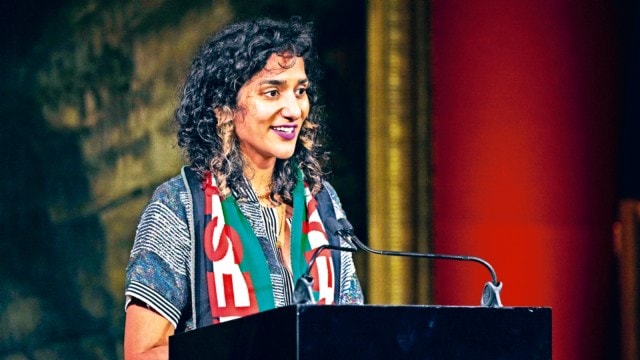
- 09 Dec 2024
In News:
Jasleen Kaur, a 38-year-old Indian-origin Scottish artist, has won the prestigious Turner Prize 2024 for her exhibition "Alter Altar". This win highlights Kaur’s unique ability to weave together personal, political, and spiritual elements into a cohesive artistic expression. The exhibition explores themes such as plurality, migration, and cultural identity, drawing from Kaur’s own family history and experiences.
Exhibition Overview:
"Alter Altar," which was first showcased in Glasgow, features an array of everyday objects and cultural symbols, including:
- A vintage red Ford Escort covered in a large crocheted doily, symbolizing her father’s migrant aspirations.
- Worship bells, Irn-Bru orange resin, an Axminster carpet, and family photographs.
- Soundtracks, including music from Nusrat Fateh Ali Khan and Bob Marley, which reflect Kaur’s multicultural upbringing.
The exhibition blends these elements to examine migration, identity, and belonging. The jury, chaired by Alex Farquharson, Director of Tate Britain, praised Kaur’s ability to combine different voices through unexpected and playful material combinations, creating a visual and aural experience that evokes both solidarity and joy.
Personal and Political Reflection:
Kaur’s work reflects on the Sikh concept of Miri Piri, which represents the balance between the political and the spiritual. This duality is central to her exploration of cultural practices and the effects of violence, colonialism, and empire on these traditions. In her acceptance speech, Kaur also addressed political issues, calling for a ceasefire in Gaza and an end to institutional complicity in Israel's actions.
About the Turner Prize:
The Turner Prize, established in 1984, is one of the most prestigious awards in contemporary British art. It aims to recognize recent developments in British art. Kaur’s win is particularly significant as it marks the 40th anniversary of the award. Previous winners include renowned Indian-origin artists such as Anish Kapoor (1991).
